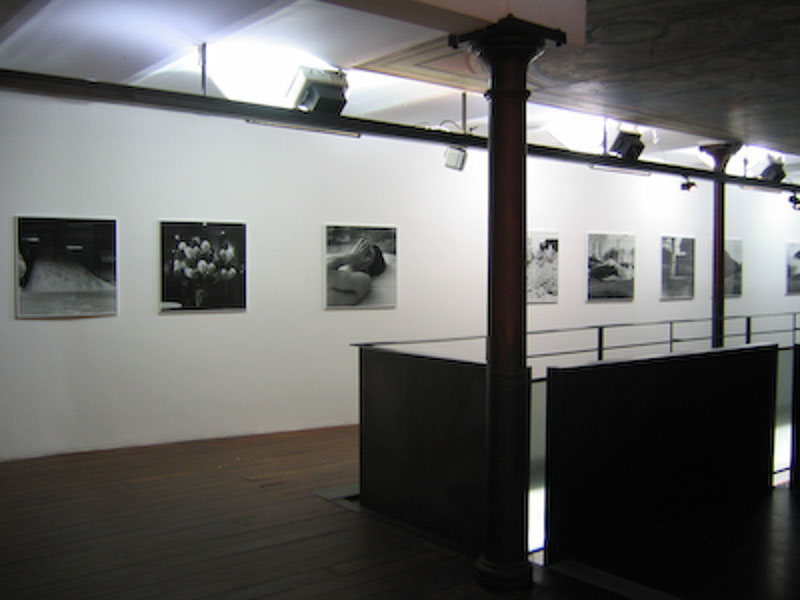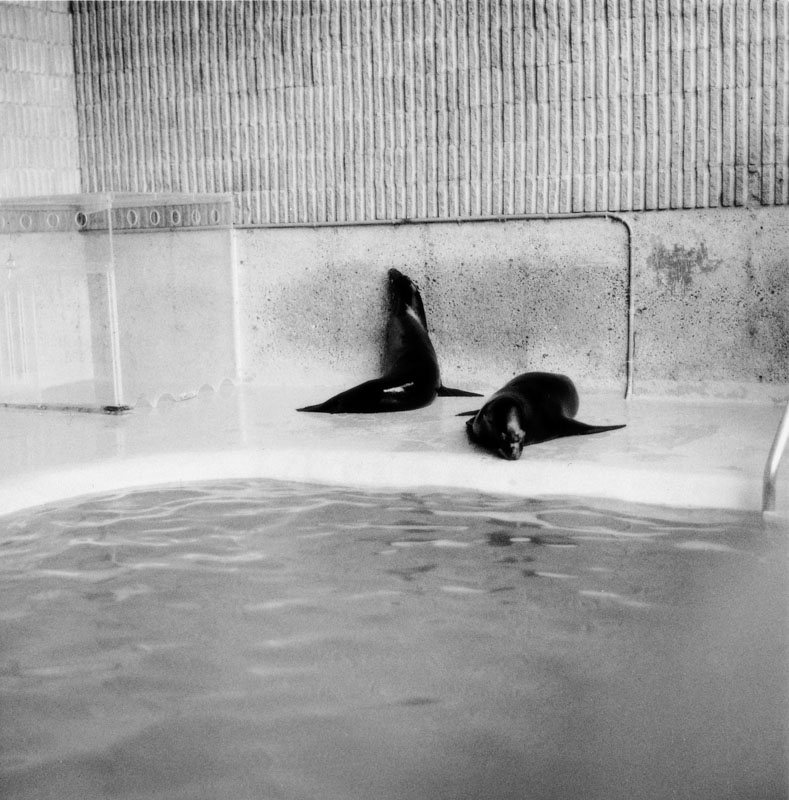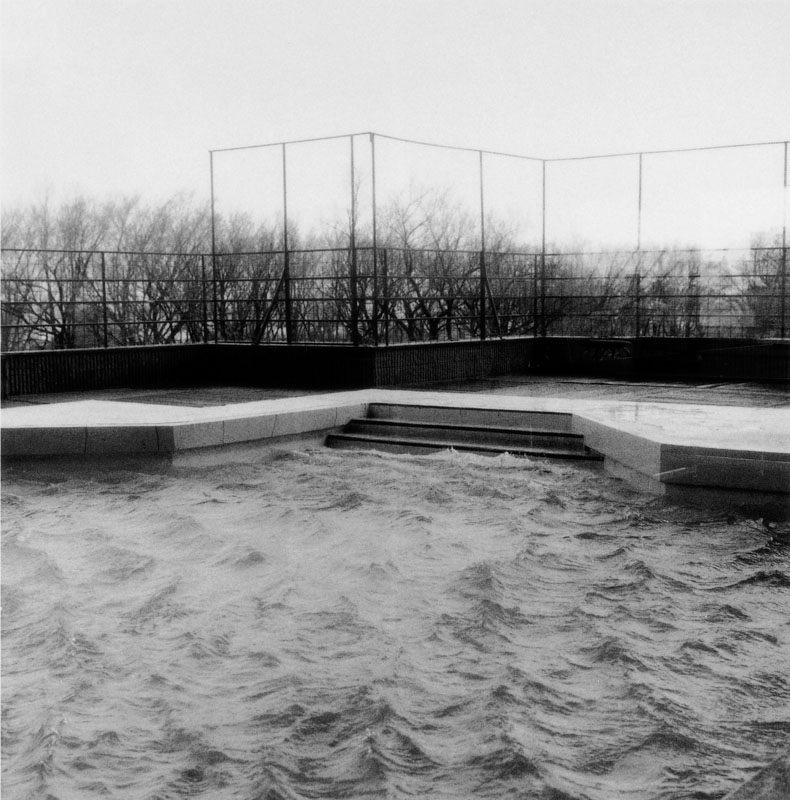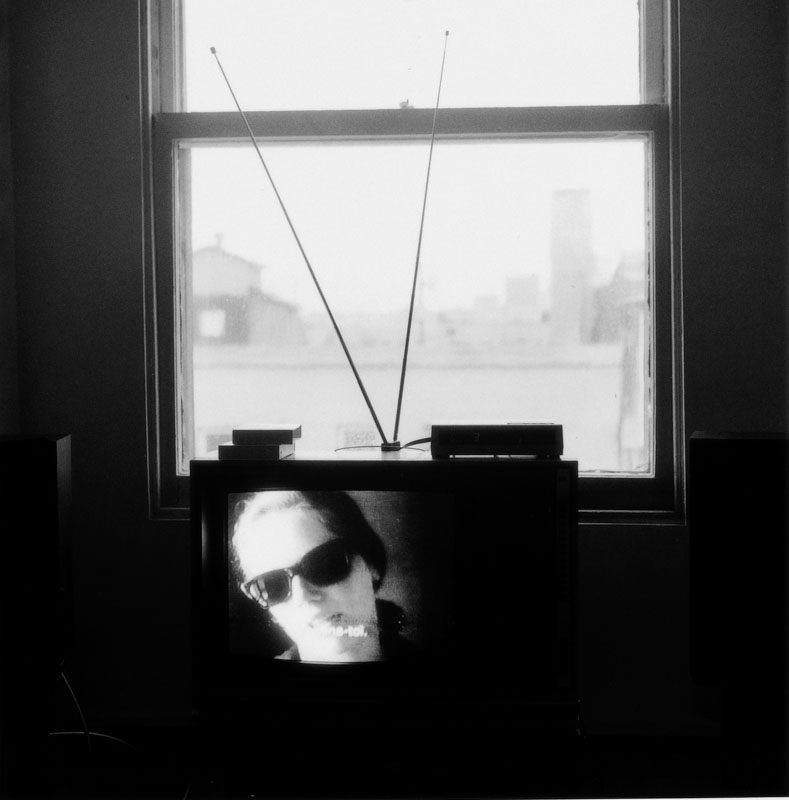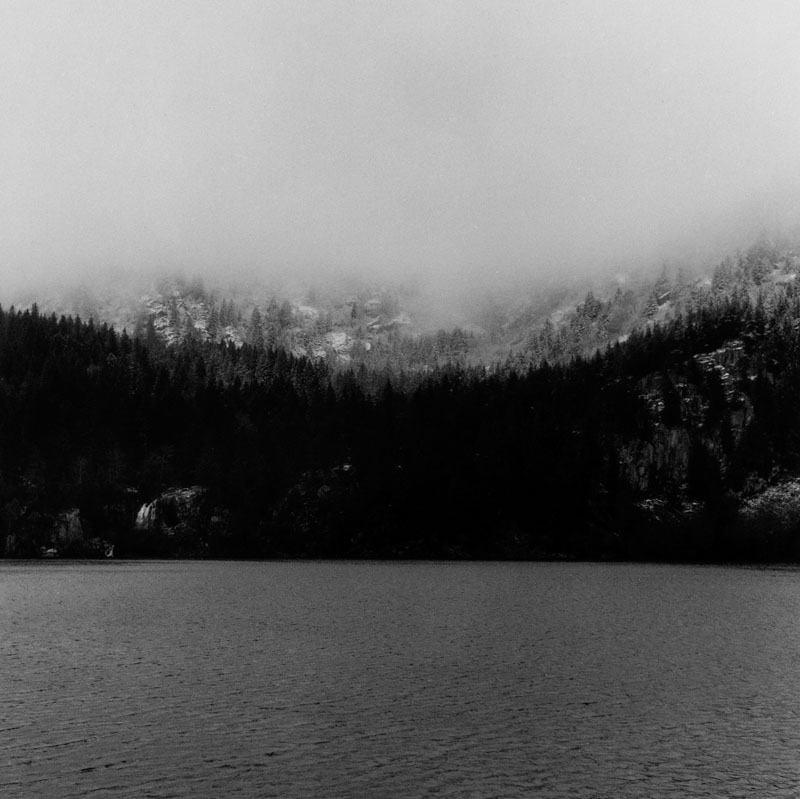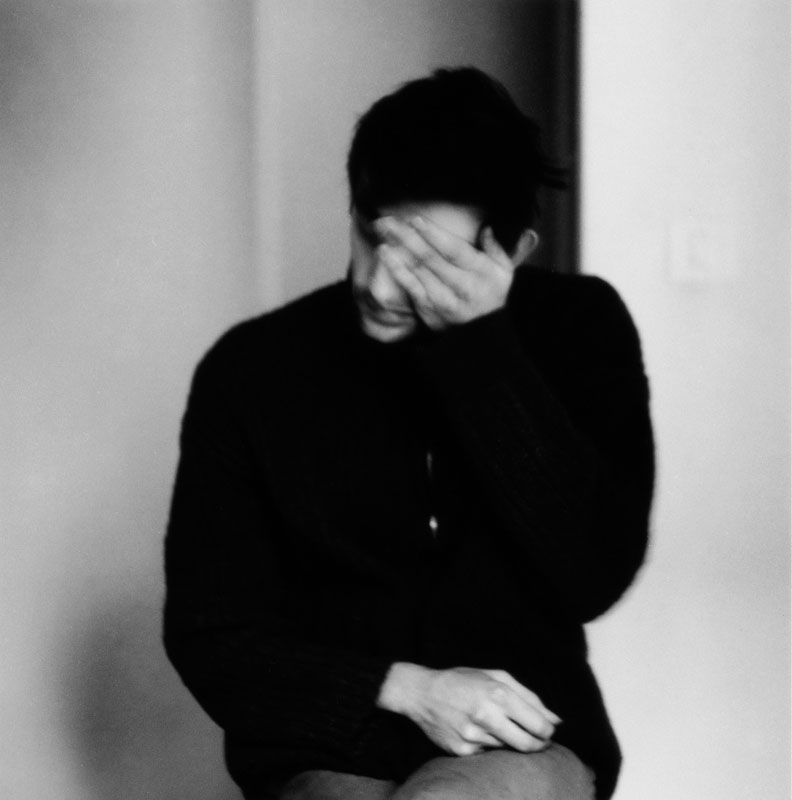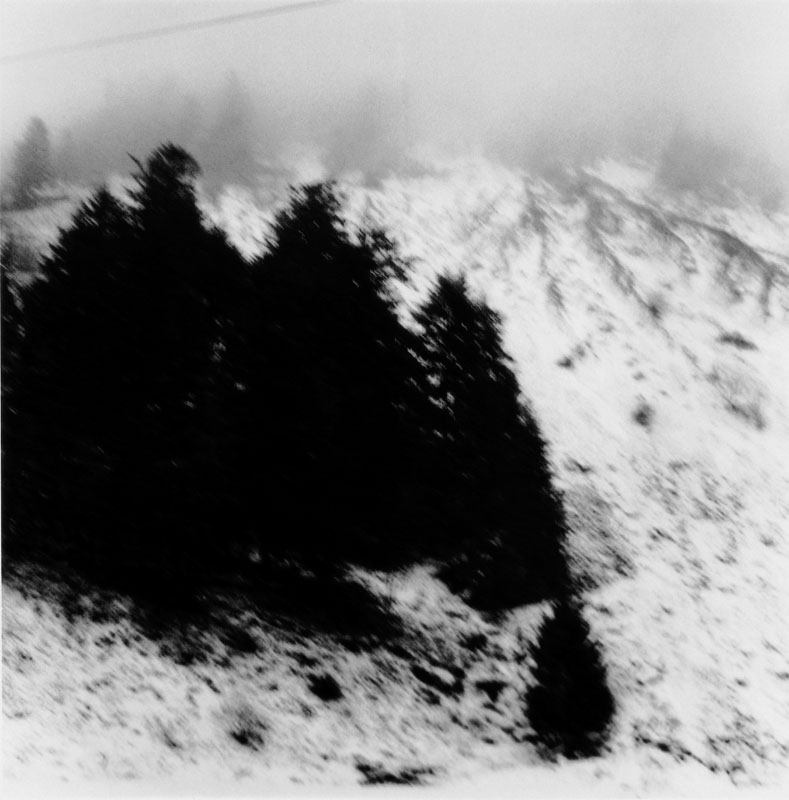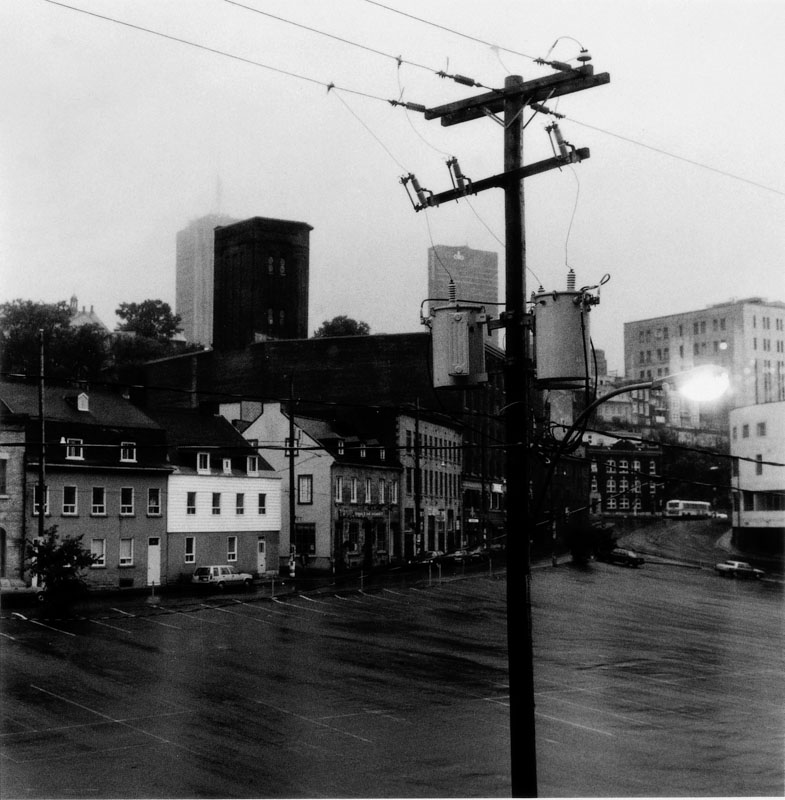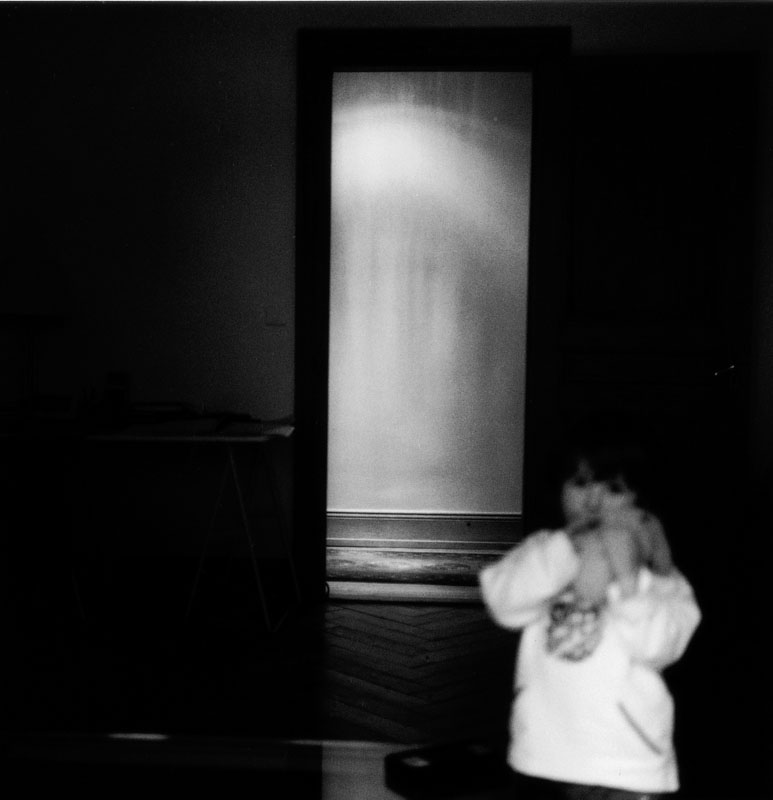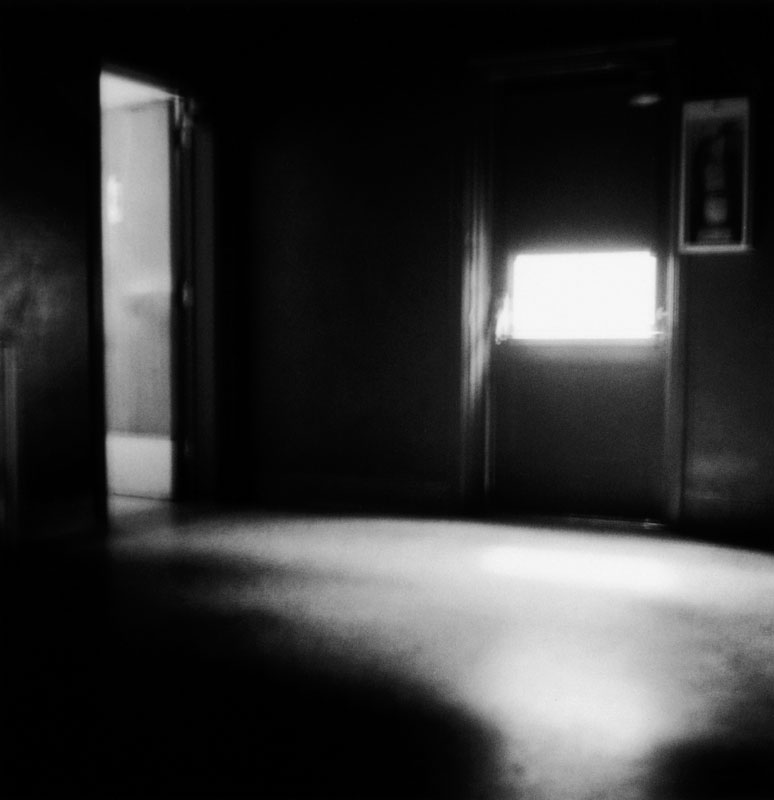Wir
FR : Le livre WIR réunit des photographies prises de 1995 à 2002, en noir et blanc. C’est dans ce livre, qu’apparaissent les premières photos de lacs. L'eau s'est immiscée peu à peu dans des photographies urbaines prises au Québec. Une piscine dans un hôtel, un bassin d’otaries, ou un parking vide : autant d’images rappelant les lacs. Ce que je nomme « lac » n’est pas uniquement une « grande nappe d’eau douce », c’est par extension, toute étendue, toute aire vide enserrée dans un espace. De manière récurrente, j’ai recherché ces formes dans l’espace urbain. En 1998, de retour en Alsace, après deux ans au Québec, j'ai commencé à photographier des lacs vosgiens. Je voulais me confronter directement à la surface de l'eau qui, dans mes photos, est un élément existentiel nous renvoyant à nous-même. Dans le livre WIR, ces photos de lacs sont associées avec des vues urbaines et des personnages pris dans leur pensées. Les images sont reliées par la pesanteur d’une lumière considérée dans sa dimension spectrale. La dimension de trace, d’empreinte lumineuse est à relier ici avec la dimension mémorielle de la photo.
Pour les 10 ans de la publication de WIR, Anne Immelé rencontre Jean-Luc Nancy afin d'échanger autour du livre. En 2003, Jean-Luc Nancy avait écrit le texte "Lumière étale" pour accompagner la séquence photographique noir et blanc réunissant des photographies réalisées dans différents territoires emplies de froids, de blancs, de nuits, de brumes. La pesanteur des nuages sur les lacs vosgiens y résonnait avec la fulgurance des congères de neige québécoise.
ENG : The edition called WIR was published in 2003 by Filigrane edition. The book collects pictures taken from 1995 to 2002, in black and white. Accompanying the photographs, a text from Jean-Luc Nancy. My first lake pictures appeared in this book. We can see the lake's shape in urban photography made in Canada. What I call « lake » is not only a large surface of water, it is by extension, any empty surrounded space. I'm exploring alternative representations of a lake. I have often been searching the lake's form in urban spaces. In 1998, back in France after two years in Quebec, I began photographing real lake in the Vosges Mountains. I wanted to meet face to face real lakes. In the book WIR, the lake pictures are collected with portraits and with urban views.
In the book, another link between the images is the heaviness from the light, considered in its spectral dimension. The indexical mark from photography is in relationships with the memorial dimension like in a picture taken in Quebec Zoo.
Through out this book, we find lamps, streetlights, all kind of lights, as in the picture of Miss Marguerite. In his text Jean-Luc Nancy wrote : « In this book, nobody looks at the spectator, except Marguerite from the old, framed picture, which is lost in the shadows from a low light. But Marguerite is dead, we discerne two dates after her name. Perhaps, the photographer and the photo are remembering their past for a brief trip into their personal history and back. The double lamps only illuminate with a single bulb, as if we had to forget, to keep the past which is far now at a distance. » I'm interested in capturing the ephemeral in the real and confront it with the stillness and the unchanging from a photograph. Lake's figure was a way to illustrated that dialectic. This opposition between fugacity and unchanging is also visible in the editing and book display. For example, a record from a brief gesture is facing a mountain stone or a hieratic portraits.
